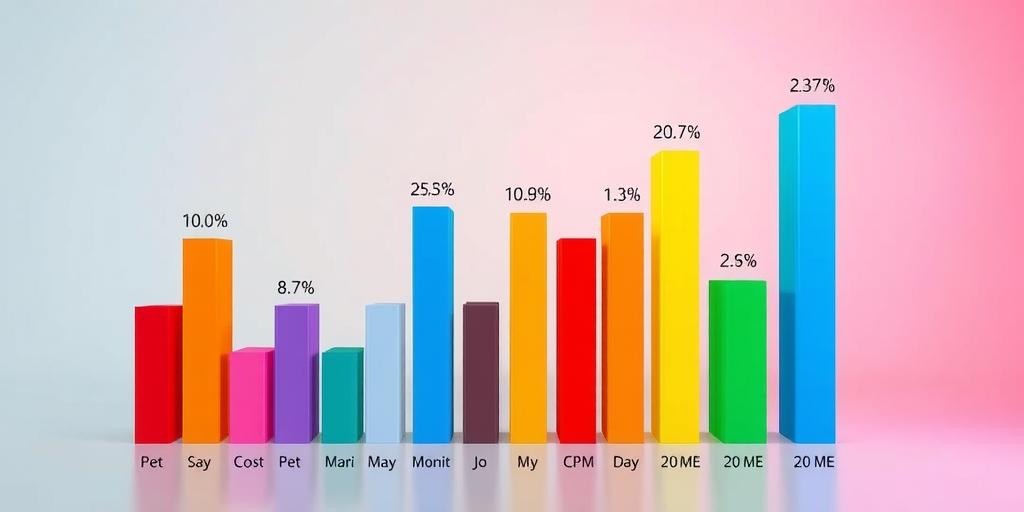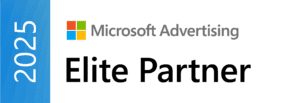As businesses plan their advertising budgets for 2025, understanding social media pricing strategies is crucial. Monthly ad costs typically range from $650 to $2,500, with some companies allocating up to $25,000 annually. Key factors like the chosen ad platform and target audience affect these prices significantly. For instance, Facebook’s CPM averages around $10.83 in January and peaks during the holiday shopping season. TikTok offers lower CPM rates but caters mainly to younger users. Seasonal trends highlight higher costs during Q4 due to increased consumer spending. Business should invest in quality content and consider multi-platform campaigns for better outcomes and ROI.
1. General Pricing Overview of Social Media Ads

In 2025, businesses investing in social media advertising can expect to spend an average of $650 to $2,500 monthly, with some going as high as $25,000 annually. The variation in costs often reflects the size of the business and its advertising objectives. Additionally, social media management services can range from $100 to $5,000 per month, depending on the level of service and expertise required.
The pricing landscape is influenced by several factors, including the specific ad platform chosen, the target audience’s characteristics, and the type of ad format utilized. For instance, platforms like Facebook and Instagram have different Cost Per Mille (CPM) rates, which can significantly affect overall ad expenses. Specific targeting can lead to increased costs because of higher competition for those audiences. Furthermore, certain ad formats, such as video and carousel ads, generally come at a premium compared to static image ads.
Overall, understanding the general pricing landscape is crucial for businesses to allocate their marketing budgets effectively and strategize their social media advertising efforts.
2. Key Cost Factors Affecting Pricing

Several key factors influence the pricing of social media advertising. The ad platform plays a significant role; for example, platforms like Facebook and Instagram tend to have higher costs per thousand impressions (CPM) compared to TikTok or YouTube. Target audience specificity also affects pricing, as targeting niche markets can lead to increased competition, raising costs. Additionally, the type of ad format chosen impacts expenses—video and carousel ads are generally pricier than static image ads due to their higher engagement potential. Campaign objectives matter too; if a business aims for conversions, the associated costs will likely be higher than for brand awareness campaigns.
The quality of the ad is crucial as well. High-quality, relevant ads can lead to lower costs on platforms like Facebook, where the algorithm favors engaging content. Moreover, seasonality plays a significant role; advertising costs tend to surge during peak shopping seasons like Black Friday and Cyber Monday, with CPM rates potentially increasing by up to 66% on these days. Understanding these cost factors can help businesses effectively budget and strategize their social media advertising efforts.
- Audience Targeting – The more specific the audience, the higher the cost.
- Ad Format – Different formats (image, video, carousel) come with varying price points.
- Bidding Strategy – How businesses choose to bid can impact overall costs.
- Competition Level – Industries with higher competition may see inflated pricing.
- Geographic Targeting – Ads targeted to specific regions may incur different costs.
- Seasonal Demand – Prices can fluctuate during high-demand periods (e.g., holidays).
- Platform Algorithms – Each social media platform has unique rules affecting ad costs.
3. Average CPM Rates for 2025
In 2025, the landscape of social media advertising continues to evolve, particularly regarding Cost Per Mille (CPM) rates across prominent platforms. For instance, Meta, which encompasses Facebook and Instagram, boasts an average CPM of $7.43. This is reflective of its massive user base and the competitive nature of advertising on these platforms. TikTok, known for its younger audience, shows a more economical average CPM of $4.38, making it an attractive option for brands aiming to engage Gen Z and Millennials. On YouTube, the average CPM sits around $4.05, which highlights its value as a stable platform for video content, especially when considering its extensive reach and high viewer engagement.
Snapchat’s average CPM is notably higher at $8.21, attributed to its unique ad formats like augmented reality lenses that drive interaction. Pinterest, while slightly cheaper than Snapchat, has an average CPM of $7.08, appealing particularly to brands in niches like home decor and fashion. It’s crucial for businesses to be aware of these CPM rates as they plan their advertising strategies, ensuring they allocate budget effectively across platforms to maximize reach and impact.
| Platform | Average CPM Rate |
|---|---|
| Meta (Facebook & Instagram) | $7.43 |
| TikTok | $4.38 |
| YouTube | $4.05 |
| Snapchat | $8.21 |
| $7.08 |
4. Pricing Trends Across Major Platforms
In 2025, social media advertising pricing trends reveal significant variations across major platforms, influenced by audience demographics and ad formats. On Facebook and Instagram, the average CPM stands at $10.83, with spikes during high-traffic periods like Thanksgiving and Black Friday, reflecting increased competition for ad space. TikTok offers a more affordable CPM of around $4.90, appealing to younger users, especially with its growing integration of shoppable features. Snapchat shows the fastest growth in ad rates, boasting a 47% year-over-year increase, driven by unique formats like augmented reality lenses that enhance user engagement. YouTube maintains a stable CPM of $5.70, making it a reliable choice for video advertising. These trends highlight the necessity for businesses to adapt their strategies based on platform-specific pricing dynamics to optimize their advertising spend.
5. Seasonal Variations in Ad Costs
Seasonal variations have a significant impact on social media advertising costs, particularly during high-demand periods such as the holiday season. For instance, during the fourth quarter, advertising expenses surge due to increased consumer spending. Businesses often see a dramatic rise in Cost Per Mille (CPM) rates, with some estimates suggesting a 66% increase on peak shopping days like Black Friday and Cyber Monday. While Meta platforms like Facebook and Instagram typically dominate during this time, TikTok ads can be around 30% cheaper, making them an attractive alternative for brands looking to maximize their reach without breaking the bank. Companies need to plan their advertising strategies well in advance to avoid these peak costs and to ensure their campaigns are effective and budget-friendly.
6. Insights on Cost Allocation for Ads
Cost allocation for social media advertising is crucial for maximizing effectiveness and ensuring a good return on investment. Typically, businesses allocate between 5% to 40% of their overall advertising budget to social media ads. This range varies based on the size of the business and its marketing objectives. For instance, small businesses might start at the lower end, while larger enterprises could invest more heavily to reach broader audiences.
Additionally, about 63% of companies allocate 5% to 25% of their marketing budget specifically for social media management services. This allocation reflects the growing recognition of social media as an essential marketing channel. For example, a company with a total marketing budget of $100,000 might spend $5,000 to $25,000 on social media management, ensuring they have the resources to create effective campaigns.
When determining how to distribute ad spending across various platforms, businesses should consider factors like audience engagement, platform popularity, and historical performance data. For example, if a company finds that TikTok ads have a lower CPM and higher engagement rates compared to Facebook, they might allocate a larger portion of their budget to TikTok.
Moreover, businesses should be mindful of seasonal variations. For instance, during the Q4 holiday season, ad costs can spike, and it becomes essential to plan budgets in advance to avoid overspending. By strategically allocating funds and adjusting budgets based on performance and seasonality, companies can enhance their advertising effectiveness and overall ROI.
7. Understanding ROI in Social Media Advertising
Return on Investment (ROI) is a crucial measure in social media advertising, as it helps businesses assess the effectiveness of their campaigns. Companies need to go beyond just looking at sales figures; they should also evaluate the profitability of their ads. For instance, if a company spends $1,000 on a campaign that generates $7,000 in sales, the ROI can be calculated as 700%. This means that for every dollar spent, the company earns seven dollars back.
To maximize ROI, businesses should implement comprehensive advertising strategies that include targeted audience engagement and high-quality ad content. A well-targeted ad can reach the right consumers at the right time, leading to increased conversion rates. For example, a fashion brand targeting young adults on TikTok may see higher engagement compared to a broad campaign aimed at all age groups.
Moreover, companies that continuously analyze their ad performance and adjust strategies accordingly tend to report higher ROI. They often leverage analytics tools to track which ads perform best and make data-driven decisions to optimize their campaigns. In some cases, agencies claim to achieve over 7x returns on ad spend when employing these strategic approaches.
understanding and focusing on ROI in social media advertising helps businesses not only to justify their ad spend but also to refine their strategies for better performance in future campaigns.
8. Strategic Recommendations for Businesses
To navigate the evolving landscape of social media advertising in 2025, businesses should adopt a proactive approach. Planning ahead is crucial; by monitoring seasonal trends, companies can time their ad placements to avoid peak pricing periods, ultimately reducing costs. For instance, if a business knows that competition spikes during the holiday season, it can allocate its budget to run ads earlier in the year when costs are lower.
Optimizing targeting is another key strategy. Businesses should utilize detailed audience segmentation to reach the most relevant users. This is especially important during competitive times when ad costs soar. For example, a fashion retailer might focus on targeting specific demographics such as age, interests, or buying behavior to ensure its ads reach potential customers effectively.
Investing in high-quality content cannot be overstated. Engaging and visually appealing ad creatives are more likely to capture attention, which can lead to higher engagement rates and lower costs per click over time. A well-produced video ad showcasing a new product line can be more effective than a basic image ad, justifying the initial investment.
Finally, leveraging multi-platform campaigns can enhance reach and effectiveness. By combining ads across platforms like Facebook, TikTok, and YouTube, businesses can maximize their visibility and engage with various audience segments. For instance, a tech company might use TikTok for brand awareness through fun videos while running conversion-focused ads on Facebook to drive sales.
Frequently Asked Questions
1. What social media platforms should I focus on for advertising in 2025?
In 2025, focus on popular platforms like Facebook, Instagram, TikTok, and LinkedIn. Each platform has unique audiences and advertising options that can help reach your goals.
2. How can I measure the success of my social media ads?
You can measure success by looking at metrics like engagement rates, click-through rates, conversions, and overall return on ad spend. These indicators show how well your ads are performing.
3. What are some common targeting options for social media ads?
Common targeting options include demographics like age and gender, interests based on user behavior, location targeting, and lookalike audiences to find new users similar to your existing ones.
4. How often should I update my social media ads?
It’s best to update your social media ads every few weeks or whenever you notice a drop in performance. Fresh content keeps your audience engaged and can improve results.
5. What creative formats work best for social media advertising?
Effective formats include eye-catching images, short videos, carousels with multiple images, and stories that create a sense of urgency. Utilizing a mix keeps your content interesting.
TL;DR In 2025, social media advertising costs range from $650 to $2,500 per month, influenced by platform, target audience, ad format, and campaign goals. Average CPM rates are $7.43 for Meta, $4.38 for TikTok, and $8.21 for Snapchat. Pricing peaks during the holiday seasons, and businesses should allocate 5% to 40% of their overall ad budget to social media. Effective strategies focus on quality content, optimized targeting, and multi-platform campaigns, aiming for high ROI, often reported at over 7x on ad spend.



